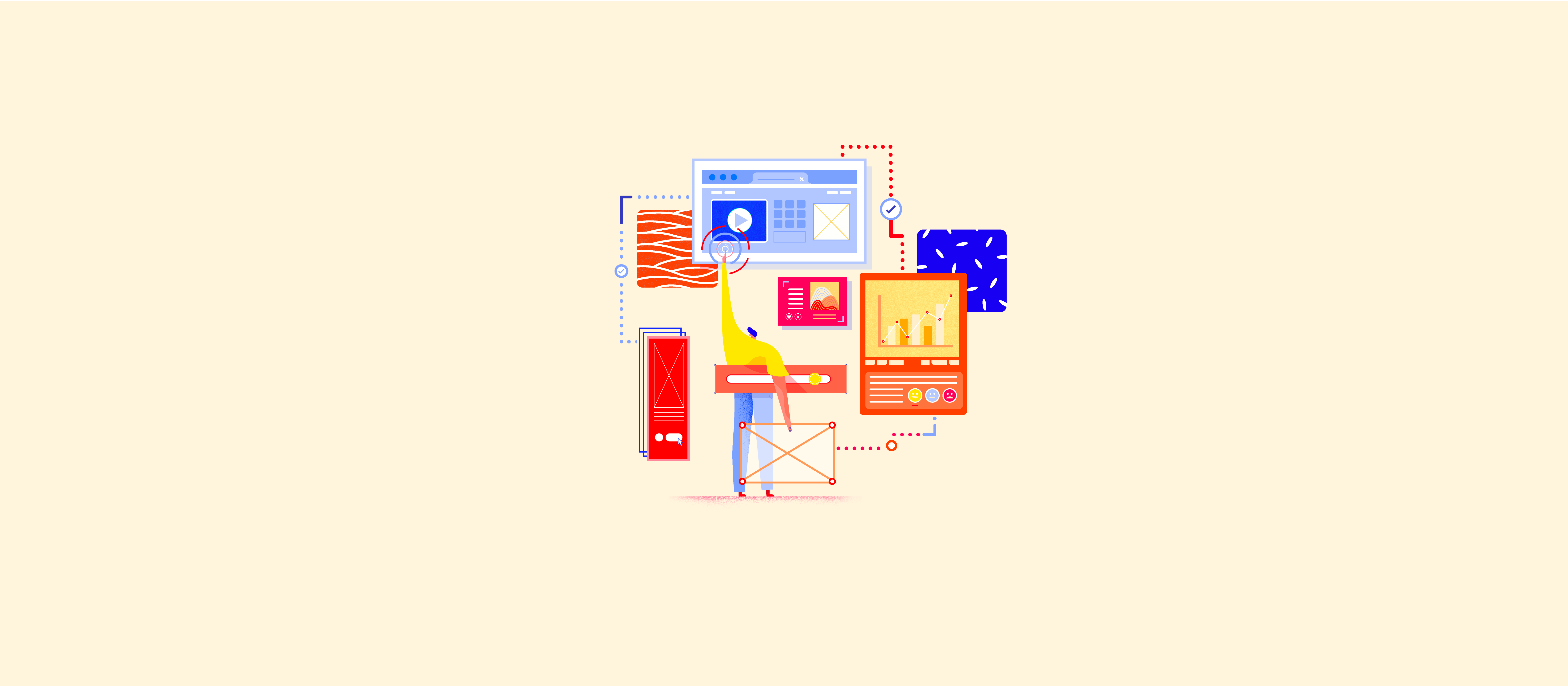A good user experience is not something that can be created through simply following best practice or a robust UX design process. To truly learn what works for your end-user, you need to know how to test UX design. Each product has it’s own specific target audience, with their own unique needs and to address those needs you need to run usability testing.
Whether you’re in a design team that doesn’t have the luxury of their own research team. Or maybe you do, but they’re overrun with tasks and you just need to test this one little thing. This shouldn’t stop you reaching your users when you need to.
There are plenty of ux design testing methods available to run fast and effective user experience tests, that’ll enable you to generate actionable feedback and create winning products. In this article, we’ll outline how user testing with prototypes can help save additional costs and resource early on in your design process.

“Testing UX design enables you to generate insights from your unique end-user, so you can spend time iterating on the things that matter.”
Where prototyping fits into usability testing
The process of designing, prototyping and testing a product before handing over to developers, will not only save your team time and money but also enable you, as a designer, to better understand your users and where to best focus your time going forward.
A prototype is an interactive mockup of your product, website or app. Whilst that might all sound quite time consuming, it’s far from it! With the prototyping tools in today’s landscape you can create these mockups without any code in a matter of minutes.
The best part? You can put these realistic prototypes in front of users to test UX design. So you can present them with new features, flows or products in a natural environment, on their native or most relevant device. Then any iterations that come about from your insights can be made before it’s even shipped!
How to test UX design with prototypes
Usability testing, or user testing, can be carried out in a number of ways, with moderated and unmoderated being the overarching categories, and within those you have sub-categories like guerrilla testing, automated user testing and so on.
The good news is prototypes can be utilised in any of these.
Define your goal
For whichever method you choose you’ll first need to define your goal. What are you testing? What does success look like? This will be super useful when you get to the evaluation stage, you’ll know what to look for throughout the test and how to benchmark your results.
Define your end-user
Then if you haven’t already, define your end-user. You’ll need this not only to design the best possible solution but also to source candidates you can test with. Otherwise, you risk the validity of your results.
Design and create your prototype
Once you’ve designed the solution for this user and mapped out how they’ll reach the goal, transform it into an interactive prototype using your prototyping tool. You can use this to present to your participants during the test, if it’s high-fidelity they won’t know the difference between this and your live product! Except this way, you’re testing before all the expensive stuff comes in.
Choose your usability testing methods
Moderated user testing requires both facilitator and participant to be present, where you’ll follow a script and interact. To set it up you’ll need to find time for both parties to be available, a place to carry out the test and a method for tracking responses and results.
It allows you to develop a strong rapport with the candidate and open up a channel for more candid feedback, however is usually more expensive and time consuming than unmoderated testing.
Unmoderated user testing relies only on the participant to be present during the test, which can be sent to them and analysed using user testing software. This means the participant can take the test in a more natural environment, however there is no opportunity for additional support throughout the session for things like follow up questions etc.
Source participants
How many you need depends entirely on you and the method you decide to follow. For example, if you choose to do moderated testing you might not have the time to run as many tests as with unmoderated (where less resource is required).
Sourcing participants can be done through posting an ad Craig’s List or Gumtree, or through a tool like Testing Time.
Analyse your data
When it comes to manual testing without any software, you'll find analysing your data is more process driven like this.
However, there are now plenty of options when it comes to ux testing software, which will track audio, visual and analytical data including how they tracked to your goal.
By the end of it, you’ll have a set of invaluable data for your initial idea from potential end-users. Making changes when a product has been shipped is more expensive and more hassle. Save yourself and learn how to test UX design early on in the design process so you have the actionable feedback you need to know where your efforts should go next.
Want to hear more about UX testing and the benefits of user research? Sign up to our dedicated user testing newsletter and receive articles, ebooks and webinar invitations on the topic.
